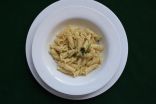(Press-News.org) June 25 -- During the wars in Iraq and Afghanistan, U.S. combat support hospitals treated at least 650 children with severe, combat-related head injuries, according to a special article in the July issue of Neurosurgery, official journal of the Congress of Neurological Surgeons. The journal is published by Wolters Kluwer.
"Given the challenging environment and limited available resources, coalition forces were able to provide quality, timely, and life-saving care to many children" with severe head injuries, write Dr. Paul Klimo, Jr., of Semmes-Murphy Neurologic & Spine Institute in Memphis, Tenn., and colleagues. They believe that resources -- personnel and equipment -- to care for inevitable neurologic and non-neurologic pediatric injuries that accompany future military conflicts should be factored early in logistical planning.
Severe pediatric head injuries in Iraq and Afghanistan
The researchers used the Joint Theater Trauma Registry (JTTR) to identify children with severe head injuries who were treated at U.S. combat support hospitals in Iraq or Afghanistan between 2004 and 2012. The study focused on isolated head injuries, the vast majority of which were combat-related. The study presents epidemiological features and outcomes of the injuries, including factors associated with in-hospital mortality.
The JTTR review identified 647 children with severe head injuries sustained in Operation Iraqi Freedom or Operation Enduring Freedom (Afghanistan). The children's median age was eight years. About three-fourths of patients were boys. Klimo and colleagues write, "Boys...tend to congregate around soldiers, are combatants themselves, or are more likely to be involved in accidental trauma."
Over 90 percent of the children had open or penetrating head injuries. The most common causes of injury were improvised explosive devices (IEDs), 38 percent of children; and blast injuries, 25 percent.
Just over half of children underwent surgery (craniotomy or craniectomy). Approximately one-third underwent placement of intracranial pressure monitoring to assess potentially damaging increases in pressure within the skull. Time spent in the military hospital varied, but was generally short, as it was a priority to transition these injured civilians to local hospitals as soon as medically possible in order to keep resources available for injured coalition soldiers.
About one-fourth of the children died of their injuries. Not surprisingly, the severity of head injury, based on the Glasgow Coma Scale Score, was a significant predictor of survival. The authors, however, did find a rather unexpected survival benefit for boys, particularly among children injured in Operating Enduring Freedom.
Because the study focused on combat injuries, it included relatively few children with closed (non-penetrating) head injuries. However, children with these injuries tended to have better survival.
"Children have and will always be unfortunate victims of any military conflict, with OIF and OEF being no exception," Klimo and co-authors write. The high numbers and high rates of death among children with severe combat-related head injuries are generally consistent with previous studies of wartime casualties in children. Consistent with other studies that looked at pediatric injuries during these two GWOT (Global War on Terrorism) conflicts, IEDs and other blast devices were the most common mechanisms of damage.
Within its limitations, the researchers hope their study will provide new insights into the nature of devastating combat-related head injuries in children. Understanding the characteristics of these injuries and the factors associated with survival and death may aid planning to manage pediatric head injuries and improve their outcomes. "Assets to comprehensively care for the pediatric patient should be established early in future conflicts," Klimo and colleagues conclude.
INFORMATION:
Click here to read the article: "Severe Pediatric Head Injury During the Iraq and Afghanistan Conflicts." (doi: 10.1227/NEU.0000000000000743)
About Neurosurgery
Neurosurgery, the Official Journal of the Congress of Neurological Surgeons, is your most complete window to the contemporary field of neurosurgery. Members of the Congress and non-member subscribers receive 3,000 pages per year packed with the very latest science, technology, and medicine, not to mention full-text online access to the world's most complete, up-to-the-minute neurosurgery resource. For professionals aware of the rapid pace of developments in the field, Neurosurgery is nothing short of indispensable.
About Wolters Kluwer
Wolters Kluwer is a global leader in professional information services. Professionals in the areas of legal, business, tax, accounting, finance, audit, risk, compliance and healthcare rely on Wolters Kluwer's market leading information-enabled tools and software solutions to manage their business efficiently, deliver results to their clients, and succeed in an ever more dynamic world.
Wolters Kluwer reported 2014 annual revenues of €3.7 billion. The group serves customers in over 170 countries, and employs over 19,000 people worldwide. The company is headquartered in Alphen aan den Rijn, the Netherlands. Wolters Kluwer shares are listed on NYSE Euronext Amsterdam (WKL) and are included in the AEX and Euronext 100 indices. Wolters Kluwer has a sponsored Level 1 American Depositary Receipt program. The ADRs are traded on the over-the-counter market in the U.S. (WTKWY).
For more information about our products and organization, visit http://www.wolterskluwer.com, follow @WKHealth or @Wolters_Kluwer on Twitter, like us on Facebook, follow us on LinkedIn, or follow WoltersKluwerComms on YouTube.
A large number of patients use online communication tools such as email and Facebook to engage with their physicians, despite recommendations from some hospitals and professional organizations that clinicians limit email contact with patients and avoid "friending" patients on social media, new research suggests.
The findings from Johns Hopkins Bloomberg School of Public Health researchers suggest a disconnect between what patients expect and what physicians -- concerned about confidentiality and being overwhelmed in off-hours -- are willing to do when it comes to online ...
June 25, 2015 - New results in animals highlight a major safety concern regarding a class of magnetic resonance imaging (MRI) contrast agents used in millions of patients each year, according to a paper published online by the journal Investigative Radiology. The journal is published by Wolters Kluwer.
The study adds to concerns that repeated use of specific "linear"-type gadolinium-based contrast agents (GBCAs) lead to deposits of the heavy-metal element gadolinium in the brain. The results will have a major impact on the multimillion-dollar market for MRI contrast agents, ...
Many patients in the latter stage of Parkinson's disease are at high risk of dangerous, sometimes fatal, falls. One major reason is the disabling symptom referred to as Freezing of Gait (FoG) -- brief episodes of an inability to step forward that typically occurs during gait initiation or when turning while walking. Patients who experience FoG often lose their independence, which has a direct effect on their already degenerating quality of life. In the absence of effective pharmacological therapies for FoG, technology-based solutions to alleviate the symptom and prolong ...
While the use of antiangiogenesis drugs that block the growth of new blood vessels can improve the treatment of some cancers, clinical trials of their ability to prevent the development of new metastases have failed. Now a study from the Massachusetts General Hospital (MGH) Cancer Center may have found at least one reason why. In their paper published online in the Journal of the National Cancer Institute, an MGH research team reports finding that the growth of metastases in lymph nodes -- the most common site of cancer spread -- does not require new blood vessels but instead ...
A good or mediocre appetizer has the potential to significantly change how the main course is enjoyed, according to one Drexel food science professor.
Jacob Lahne, PhD, an assistant professor in the Center for Hospitality and Sport Management, recently found that a comparatively good appetizer could make people enjoy the main course less than if it were preceded by a mediocre appetizer.
Lahne tested and analyzed subjects' hedonic (liking) responses to a main dish of "pasta aglio e olio" (pasta with garlic and oil) after they had either a good or mediocre bruschetta ...
Nature loves crystals. Salt, snowflakes and quartz are three examples of crystals - materials characterized by the lattice-like arrangement of their atoms and molecules.
Industry loves crystals, too. Electronics are based on a special family of crystals known as semiconductors, most famously silicon.
To make semiconductors useful, engineers must tweak their crystalline lattice in subtle ways to start and stop the flow of electrons.
Semiconductor engineers must know precisely how much energy it takes to move electrons in a crystal lattice. This energy measure is the ...
Scientists from UCL (University College London) have designed a chemical compound that has reduced the growth of pancreatic cancer tumours by 80 percent in treated mice.
The compound, called MM41, was designed to block faulty genes. It appears to do this by targeting little knots in their DNA, called quadruplexes, which are very different from normal DNA and which are especially found in faulty genes.
The findings, published in Nature Scientific Reports, showed that MM41 had a strong inhibiting effect on two genes -- k-RAS and BCL-2 -- both of which are found in the ...
Wading bird numbers in the Florida Everglades are driven by water patterns that play out over multiple years according to a new study by the U.S. Geological Survey and Florida Atlantic University. Previously, existing water conditions were seen as the primary driving factor affecting numbers of birds, but this research shows that the preceding years' water conditions and availability are equally important.
"We've known for some time that changes in water levels trigger a significant response by wading birds in the Everglades," said James Beerens, the study's lead author ...
Researchers from The University of Manchester are part of a team that has identified an important new approach to diagnose infections in critically ill patients rapidly and accurately.
A study by colleagues in Salford and Manchester found that chemically analysing breath specimens from patients in intensive care can reveal bacterial infection in the lower respiratory tract of ventilated patients at risk of developing pneumonia.
Although the work is in its early stages, the findings so far look very exciting and could potentially have a huge effect on clinical practice ...
A pioneering new technique to produce high-quality, low cost graphene could pave the way for the development of the first truly flexible 'electronic skin', that could be used in robots.
Researchers from the University of Exeter have discovered an innovative new method to produce the wonder material Graphene significantly cheaper, and easier, than previously possible.
The research team, led by Professor Monica Craciun, have used this new technique to create the first transparent and flexible touch-sensor that could enable the development of artificial skin for use in ...

